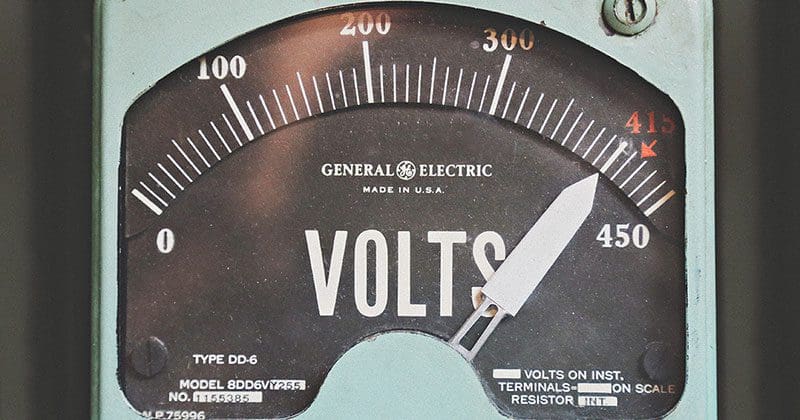The topic of measuring amplifier power is perhaps the most often discussed specification in the car audio industry. There’s a clamor among enthusiasts over YouTube videos of amplifiers cranking out amazing amounts of current while connected to a bank of load resistors or an amp dyno. If your favorite brand of subwoofer amp makes even five more watts than a competitor’s, these power-hungry fans will claim a victory, and another wave of posts, memes and controversy floods the Interwebs.
This craving for power is nothing new. Back when most of you were in diapers, car audio competition sanctioning bodies decided that competition classes would be based on amplifier power ratings. At the time, almost nobody was actually testing these power claims. Orion launched its Concept 97.3 amplifier with a rating of 0.5 watts per channel. Everyone knew this was the same chassis and design as the 2100 HCCA and 2250 SX. As such, all involved knew that the amp would easily produce 1,000 watts of power. Orion’s point was to emphasize the silliness of power ratings.
What Is Amplifier Output Power?
Unless you’ve taken some college or university courses on AC electrical theory, understanding how to measure amplifier output power can be a little complicated. We’ll try to condense months of learning into a few paragraphs. Unlike DC circuits, it’s possible for the voltage and current in an AC circuit to arrive at the load (speaker) at different times. Alternating current circuits have an opposition to current flow known as reactance. Reactance is similar to resistance but only affects AC signals. Reactive impedance can be inductive, as would be found in a speaker voice coil and result in the current lagging behind the voltage, or it can be capacitive, which results in the voltage lagging behind the current.
When we measure power, we typically assume we can multiply an RMS voltage measurement by an RMS current measurement to determine the watts delivered to a load. If the current and voltage aren’t in phase, the peaks and valleys don’t align and we get less power to the load than we’d expect. This isn’t an issue exclusive to audio signals. Industrial electrical installations that involve large motors, electric heaters or LED lighting contend with the same phenomenon. You can see hundreds of examples by searching Google or YouTube for “power factor.”
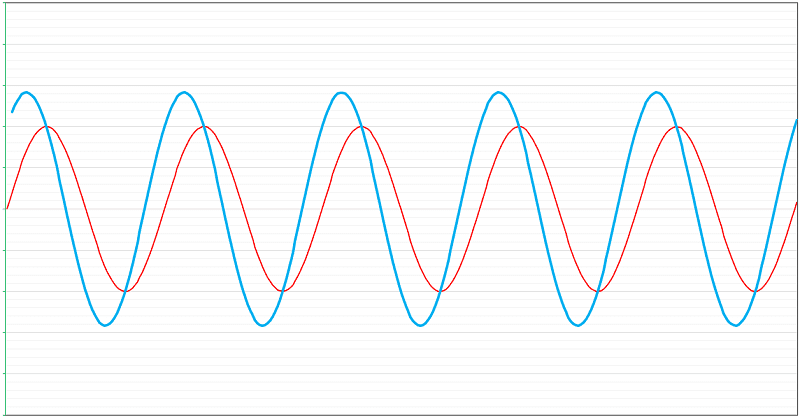
Measuring Amplifier Power
To keep the process of measuring amplifier power simple, most manufacturers use power resistors instead of speakers as a load. There is no inductance or capacitance in an ideal resistor, and the assumption can be made that current and voltage are in phase. As such, if we know the resistance of the load and the voltage across the load, power can be calculated by dividing the square of the voltage by the resistance. For example, if we measure 10 volts RMS across a 4-ohm resistor, that’s 25 watts of power.
If you read our article on car audio amplifier clipping, then you know there’s a point at which the signal coming from the amp no longer represents the signal fed into the amp. Right or wrong, the industry has chosen a distortion level of 1% as the benchmark for an allowable amount of harmonic distortion. What does this 1% number mean? Without getting into a lot of complicated math, a test tone with 1% distortion has harmonic content that’s 40 dB quieter than the stimulus signal. Make no mistake; you can hear this unwanted content quite clearly. A few other numbers worth keeping in mind are 3.16% distortion has harmonics at -30 dB and 10% distortion has harmonics at -20 dB. If you are curious, a harmonic with a peak that’s only -10 dB lower than the test signal is considered 31.6% distortion.
Popular Power Measuring Tools
We don’t all have access to banks of load resistors, distortion analyzers and oscilloscopes. Many enthusiasts and professionals have, however, invested in the power measurement tools made by D’Amore Engineering. Their AMM-1 Audio Multimeter and AD-1 amp dyno (as mentioned earlier) have become the grassroots standard for power measurement. On the professional side, almost everyone uses some version of an Audio Precision analyzer. If you want to go shopping for the good stuff, pricing for a new APx-Series analyzer starts at about $7,000, with most configurations coming in at more than $10k or well into the $30,000 range
I recently saw a post on Facebook where a technician compared a compact amplifier’s power output as measured by the AMM-1 with the specifications on a competing product’s packaging. Seeing this was the lightbulb moment that made me realize that most people don’t understand how power measurements work. The AMM-1, the tool that I use for all of the Test Drive Reviews we do here at BestCarAudio.com, has a built-in clipping indicator. The test this technician performed saw this little amp make around 70 watts of power per channel, according to the clipping indicator on the AMM-1. He compared that to the 50-watt specification on a popular amplifier package from one of the head unit companies.
So, what’s the problem? Seventy watts is better than 50 watts, right? Sure it is! With that said, the numbers aren’t comparable. The AMM-1 doesn’t always measure power at 1% distortion. The ratings on the box for the other amp are at 1% distortion. I’ve measured the same amp that was in this video. It made 51 watts per channel at 1% distortion.
Why Distortion Matters in Power Ratings
All this blabbering about power ratings doesn’t mean much without a real-world example, does it? I dug through my amplifier collection and pulled out a prototype of an American-designed amplifier made for a company I used to work for. This amp was rated at 85 watts per channel into a 4-ohm load at 1% distortion with a supply voltage of 14.4 volts. I set it up in my lab, and we are going to take some measurements with my AMM-1, an oscilloscope and the QuantAsylum QA401 audio analyzer.
Power at 1% Distortion
The first thing we’ll look at is how much power the amplifier makes when connected to a resistive 4-ohm load with a total harmonic distortion and noise (THD+N) measurement of 1%.
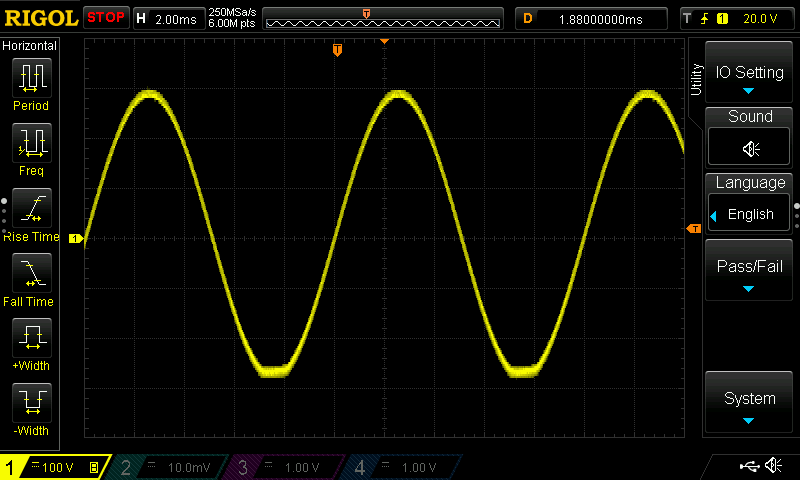
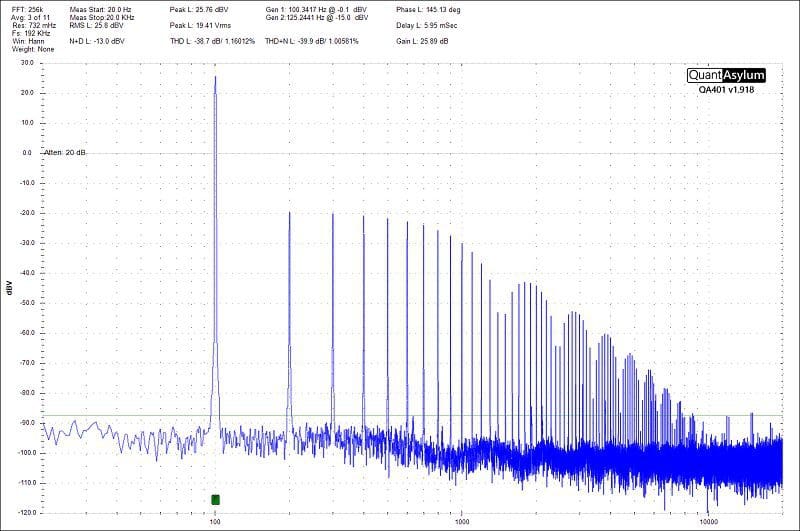
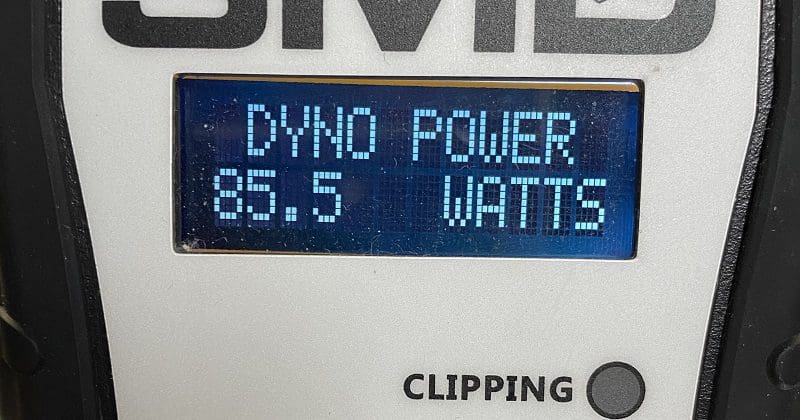
Next, we turned up the input signal until the clipping light on the AMM-1 turned on, then repeated the measurements. We can see that the distortion has increased dramatically, and the power output is up by just over 17%.
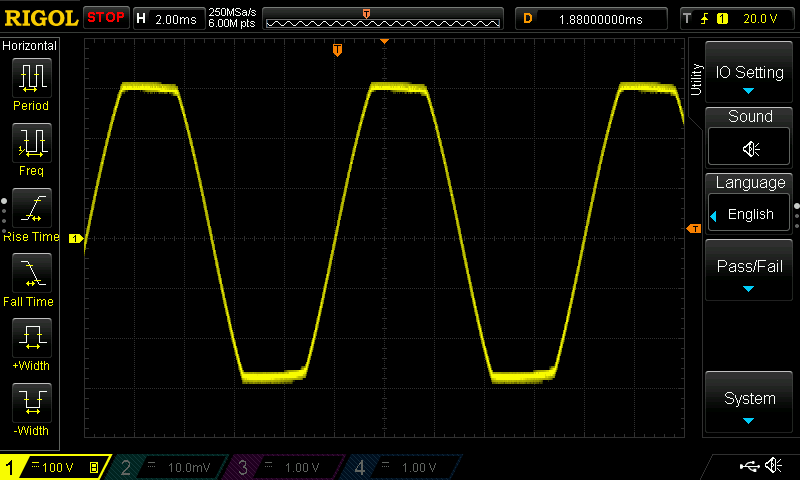
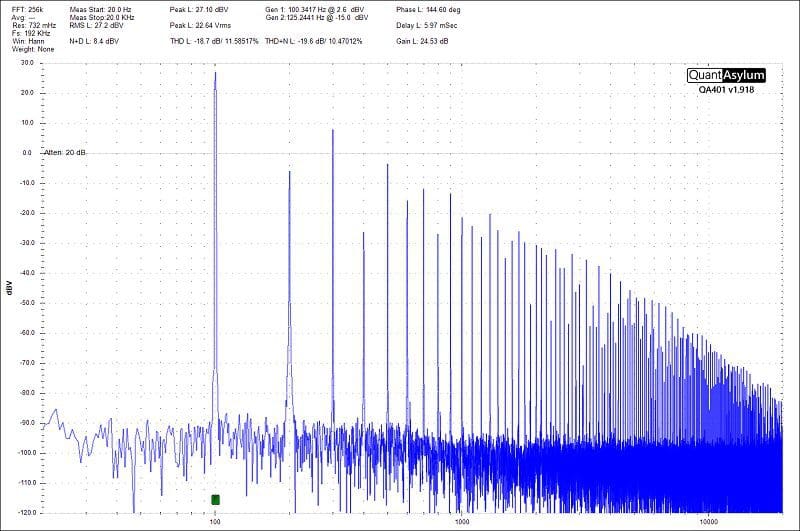
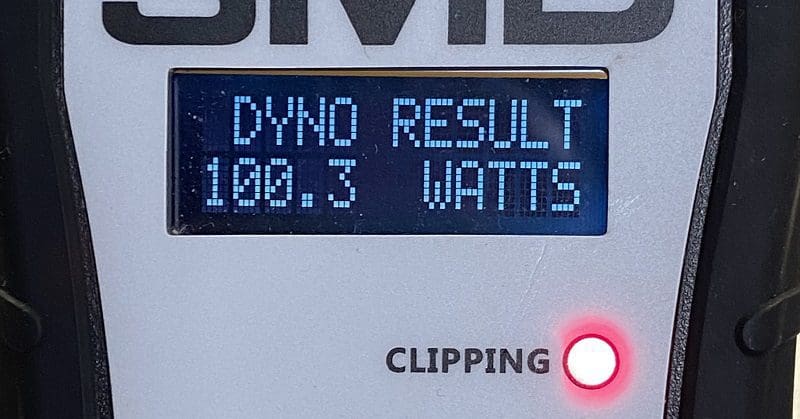
Is There Something Wrong with the AMM-1?
This information raises the question, is there something wrong with the AMM-1? The answer is an unequivocal No. It’s doing a great job measuring power. The point at which the clipping indicator comes on varies depending on the harmonics added by the amp. I performed this same test with a Class-AB amplifier from the same supplier, and the AMM-1 showed that it made 81 watts at 1% according to the QA401, and 83 watts when the clipping indicator light was illuminated. Because the difference between 81 and 83 watts is impossible to hear, that change is statistically irrelevant.
Without a way of analyzing a test tone’s spectral content with great accuracy, power measurements are difficult to compare. Reputable car audio amplifier manufacturers state their ratings at 1% distortion. If there’s no distortion spec, how do you know what’s happening to your audio signal? It’s worth adding that “uncertified” and “dynamic” power tests include even more distortion than this clipping measurement. If you are an SPL enthusiast trying to win a contest, why would you want the audio signal going to your subwoofers to have significant amounts of 80 and 120 and 160 Hz information if you are trying to play a 40 Hz tone?
All of the amplifier power measurements we make here at BestCarAudio.com will be taken with the AMM-1 meter using our load resistors bank. The QuantAsylum QA401 Audio Analyzer will do distortion analysis to determine when we’ve reached the 1% THD+N level. This process guarantees you are getting an apples-to-apples statement of what each amplifier is capable of, and that information complies with the ANSI/CTA-2006-C specification requirements. It’s worth adding that we’ll also follow the CTA_2006-C spec of loading all channels while testing since that represents a worst-case scenario.
